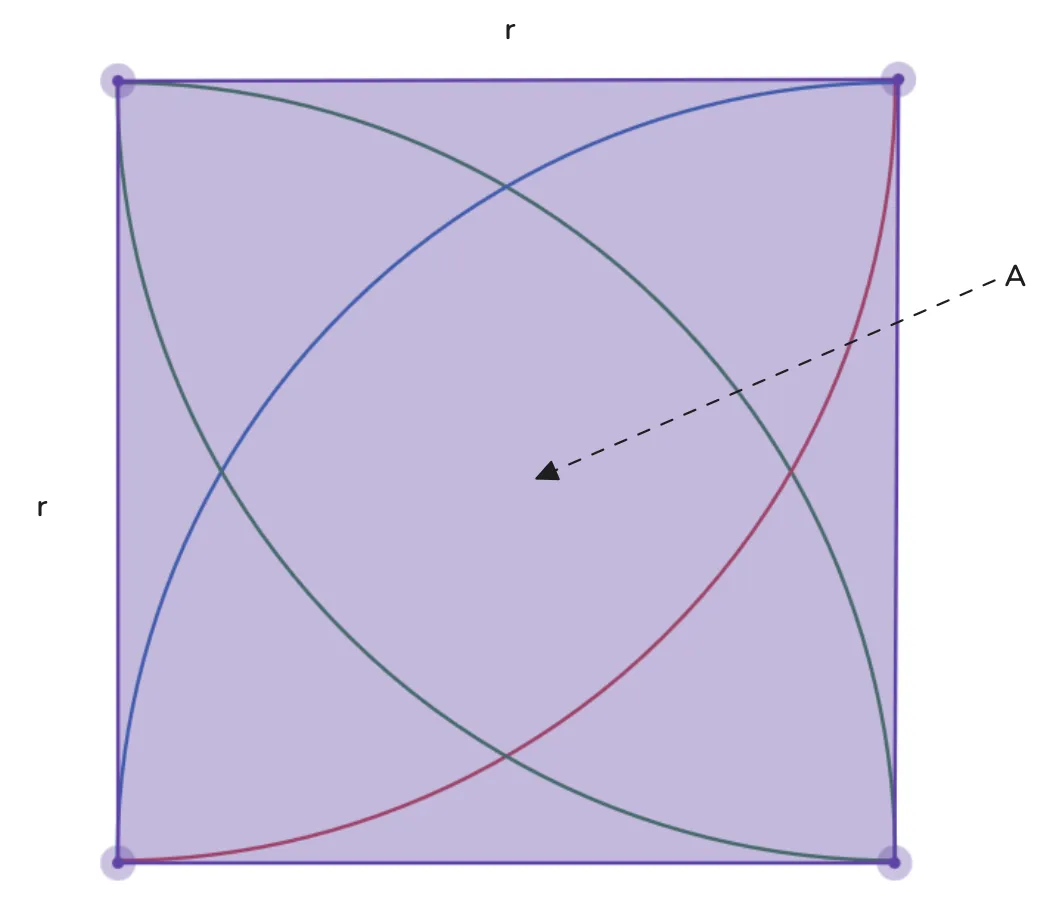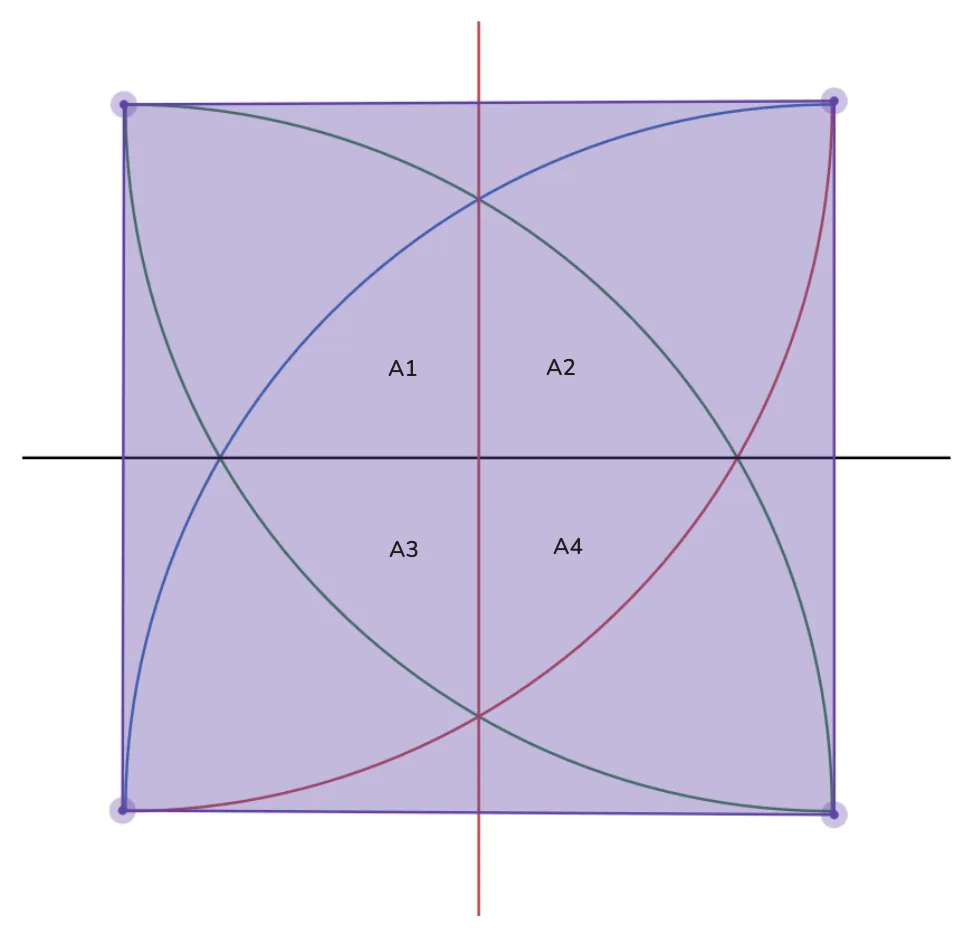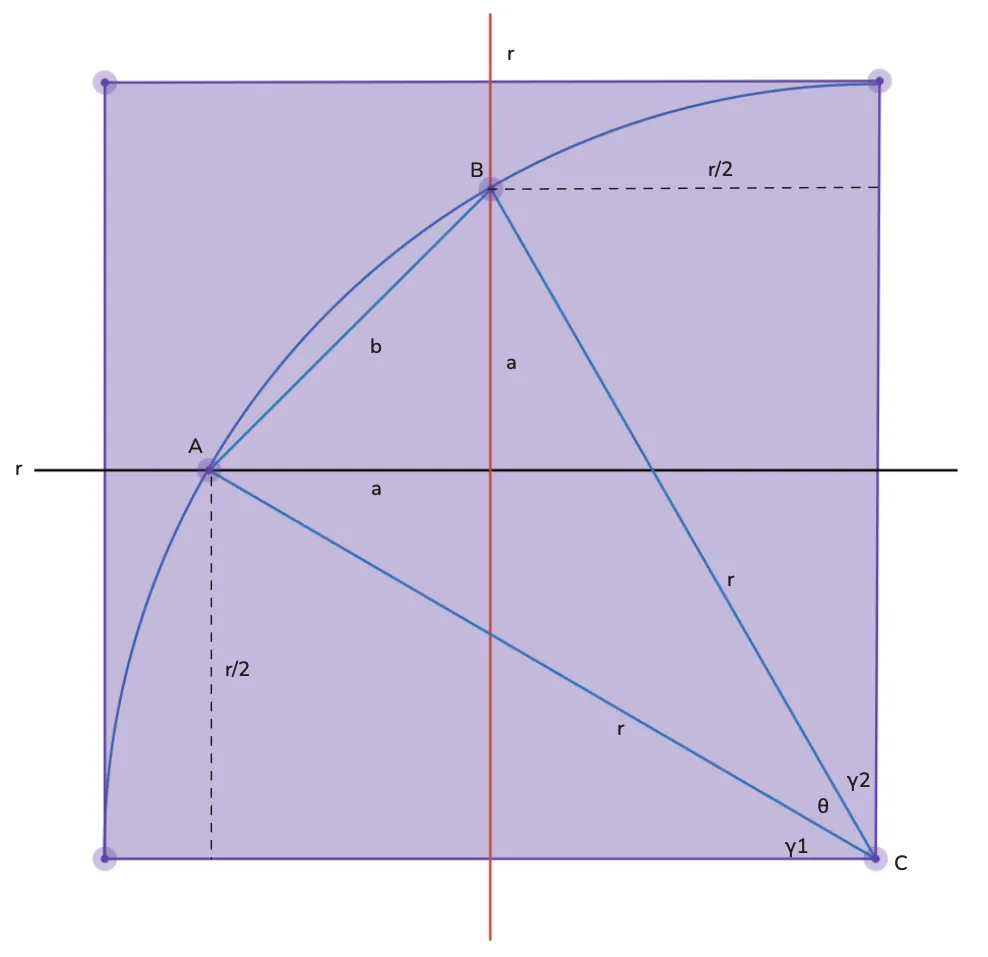Circles captivate us, and inscribed circles doubly so. In a previous post, we tackled finding the area of a shaded region. Today we pursue a similar goal with a twist.

Here we have an square containing four inscribed circles, each also of radius . Our mission: find the total area of that diamond-shaped region nestled in the center.
While numerical integration could solve this, we’ll take the geometric route. Our focus here is building intuition and strategy, not wrestling with integrals.
Oh Geometry!
When tackling geometric puzzles, I like to inventory what we already know and build from there.
Our toolkit includes familiar formulas: squares have area , circles have area , and triangles with base and height have area . From our previous exploration, we also have a formula for the area of a chord segment that depends on the subtended angle and radius —let’s call this .
Time to this problem1. Consider the following decomposition:

We’ve divided our diamond into four equal2 curved triangles, each bounded by its corresponding circle.
Since these areas are equal, we need only compute and multiply by four. Let’s zoom in on —the diagram below looks complex at first, but will clarify our approach.

I’ve isolated the curve corresponding to and added sector for reasons that will soon become apparent. Our target region sits in the upper-left quadrant.
From the diagram, equals the area of chord segment plus the triangular area .
For the area of chord segment , we recall from our previous post:
where (in radians) is the angle subtended by chord at the circle’s center.
Therefore:
Now we face a choice: equation involves both and . To get a single-variable function , which should we eliminate?
From the diagram, appears more tractable. It’s constrained by ; the angles at the square’s corner sum to a right angle.
So we’ll express in terms of . Fortunately, the geometry cooperates: relates to via Pythagoras, and connects to and through sector .
Equation follows from .
Substituting into equation :
Excellent! Now depends only on .
The Final Stretch
Nearly there! The diagram suggests has a fixed value. Returning to the square’s bottom-right corner, we have .
Both and are determined by right triangles with hypotenuse and shorter leg . Basic trigonometry gives:
By symmetry:
Now we can find :
Substituting into equation :
The diamond’s total area is simply four times :
Mission Accomplished
We’ve found our diamond’s area! The result depends only on and scales quadratically—exactly what we’d expect. As a sanity check, try plotting this for in Desmos and count grid squares3.
A delightful discovery: our angle always equals , independent of . This geometric invariant elegantly confirms that our area formula depends solely on the radius.
Thanks for reading!
Footnotes
-
If you’ve forgotten, this stands for reject, reframe, and reduce and should be read in the same spirit as “gaslight, gatekeep, girlboss”. ↩
-
Symmetry guarantees equality—the diamond mirrors the square’s symmetry, and we’ve partitioned the square into four equal regions. ↩
-
Challenge: define one function for a single curve, then construct the other three using transformations like . ↩